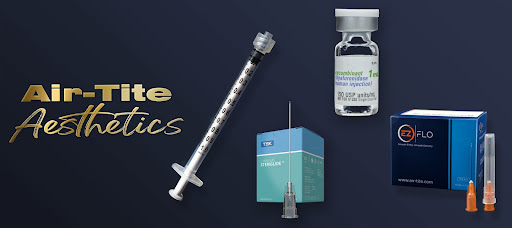
-Written by Erin Ashe, CSA, MSA
When it comes to injecting Hyaluronic filler, practitioners have one of two choices—needles or cannulas. While needles have long been the traditional method of filler delivery, cannulas have proven themselves to be as good, if not better, for many reasons.
One injection point (versus multiple with a needle), precise control, and less risk of bruising and bleeding are just a few of the many benefits of using a cannula. One more benefit recently came to light in late 2020.
Murad Alam, MD, MSCI, MBA, et al. performed a study in December of 2020 that looked at the rates of vascular occlusion associated with using needles vs. cannulas for filler injections. They found that the risk of a vascular occlusion using a needle is 1 in 6,410 versus 1 in 40 882 when using a microcannula.
Read on to learn why injectors should prioritize cannulas when injecting Hyaluronic filler.
Note: This information contained within this blog post is for educational purposes only and does not substitute for professional medical advice or training.
A vascular occlusion is a somewhat rare but highly dangerous complication that can occur during filler injection. It happens when the filler is accidentally injected into an artery, or the artery is compressed from nearby filler material.
When this happens, it can stop blood flow, diffuse tissue oxygen, and cause a blockage. The most common side effect is tissue necrosis (and the resulting need for a skin graft), but blindness can also occur if not treated rapidly.
According to Dr. Martyn King, et. al in the Aesthetic Complications Guidelines, there are a few initial warning signs of vascular occlusion including blanching and changes in skin color and severe, immediate, and excessive pain.
Venous occlusions are sometimes indicated by dull, less severe, or delayed (hours or days) pain. In other cases, affected patients have reported no pain at all. Changes in skin color could be immediate or take 3-4 hours to manifest.
Secondary and later-stage symptoms include tissue necrosis, pustules, blisters, and scarring.
Injectors should have a keen understanding of facial anatomy as there are several “danger zones” due to complex vasculature. These high-risk areas have a higher incidence of vascular occlusion from filler occurrences. Injecting lip filler is also another high-risk area.
A few of the “riskier” areas include:
In a JAMA Dermatology article Murad Alam, MD, MSCI, MBA, et al. explains that with their blunt tips, microcannulas are hypothesized to be less likely to pierce vessel walls.
Similarly, in the Aesthetic Complications Guidelines, Dr. Martyn King, et. al shares that using blunt-ended cannula of 25G or larger is less likely to penetrate a vessel, but the risk of penetration increases with the force or pressure used and the age of the patient.
There are many different ways to help reduce the risk of vascular occlusions. We recently talked with Dr. Mariale Foley, an oculoplastic facial surgeon. Dr. Foley stressed the importance of knowing and understanding facial anatomy and practicing safe injection techniques.
Dr. Martyn King, et. al also shares techniques for minimizing the risk of vascular occlusions, including:
It’s imperative to quickly start your vascular occlusion protocols if you suspect the occurrence of one. Dr. Martyn King, et. al shares that if you’ve administered a Hyaluronic acid filler and suspect vascular occlusion, you can try massaging, tapping, or applying heat to the affected area. If the affected area is not responding well, immediately grab your “filler crash cart” and administer Hyaluronidase.
If you’ve administered another type of filler, such as Sculptura, Hyaluronidase will not work to stop the occlusion. Instead, immediately stop your injections, massage the affected area, or apply compression. You can also administer oral steroids or Aspirin.
Hyperbaric oxygen therapy can help along with using a warm compress and nitroglycerin paste to allow oxygen and blood flow by opening up the vessels.
Erin Ashe, CSA, MSA, Aesthetic Sales Representative from Air-Tite, recommends the premium STERiGLIDE™ cannula. Another popular but less expensive choice is the CSH cannula. The STERiGLIDE™ cannulas come 20 per box with 20 pilot needles for $151. The CSH cannulas come 25 in a box without pilot needles for $119.
You can also read more about choosing cannulas for injecting filler in a previous article.
However, as a final reminder, award-winning aesthetic practitioner, speaker, trainer, and co-founder of The Aesthetic Immersion, Lori Robertson MSN, FNP-C, told us:
“In the hands of forceful injectors, cannulas can be just as dangerous as needles. I wish we could teach all injectors to be gentle and thoughtful of the tissue planes when placing a cannula. I always tell my students to be gentle and let the tissue LET you in. You should never force it.”
At Air-Tite, we sell a wide variety of cannulas, syringes, and needles for filler and other aesthetic injecting. Click below to learn more.
STERiGLIDE™ premium aesthetic cannulas